Tags
Castleton, courtyard, English Heritage, harebells, maidenhair spleenwort, Mam Tor, Peak District, Peveril Castle, ruins, the keep, views, wild marjoram
The day following our walk at Ilam we had arranged to meet Alice and Elinor at Castleton in Derbyshire.
Castleton is a pretty village and a great place to stay if you want to walk in the hills or visit the mines. For some years we stayed at a site just outside the village every Whitsun half-term holiday but gave up eventually because we got tired of the crowds of people everywhere. Looking at the numbers of visitors when we went there this August, it seems that there are fewer visitors in the later summer than earlier in the year.
Alice and Elinor took the bus from Sheffield and arrived ten minutes before us. We had got delayed by having to make a detour round an accident on the Leek to Buxton road. We met them in a pub and decided to stay there and have some lunch.
After lunch we wandered through the village and noted all the changes made since we had last visited. We all agreed that it would be good to climb up to Peveril Castle. I didn’t manage to take any pictures on my ascent to the castle. I found it much more tiring than I remembered and in retrospect maybe I shouldn’t have had quite so much for my lunch! The path zig-zags up the steep climb from Castleton and we got very hot in the bright sunshine. Alice sped up the path before us; she lives in a very hilly city and is used to walking everywhere. Eventually we got to the entrance to the castle which is through the remains of one of the gatehouses built in the 12th century. We then entered the main courtyard of the castle which is now a large lawn. Originally this space had many buildings in it; a great hall, a kitchen, perhaps guest halls, servants and retainers homes, store sheds, stables and the like. It is possible to see the outline of some of these long-demolished buildings.
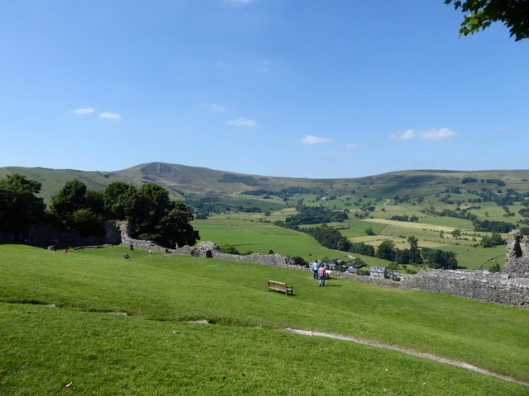
Looking down the courtyard to the remains of the curtain wall and beyond to the surrounding Peak District hills. Mam Tor is the peak to the left of centre.
The curtain wall which surrounded the courtyard was constructed early on in Norman times. It was built by the Peverils and apparently includes Roman tiles probably taken from the ruins of the Roman fort at Navio (Brough).
William the Conqueror’s supposedly illegitimate son William Peverel was a great favourite with the Conqueror and after the conquest he was granted the Royal Manors of the Peak. In this way he became the administrator of the Royal Forest of the Peak in Castleton on behalf of the Conqueror. He built a castle in 1080 on this site which is naturally strategically strong; it is quite difficult to get to and also easy to defend. It was originally built of wood but after some years it was thought expedient to replace it with a stone structure and this was done in about 1175 and the remains of this later building is what is seen today.
The Keep was originally 60′ high and was faced with fine gritstone blocks. These can still be seen on the south and east sides of the building. You can see them at the top of the Keep and around the lower window in the photo above.
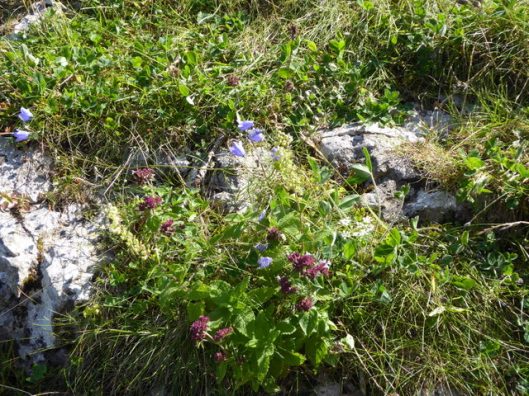
Harebells (Campanua rotundifolia) and what looks like Wild Marjoram (Origanum vulgare) growing in the courtyard. There are a couple of other plants here that I can’t ID. I wish I had looked more carefully at the time!

Looking down into Cavedale at the rear of the castle. Originally the approach to the castle was from this side with a bridge across a moat.
When the castle was rebuilt in stone in 1175/6 this Keep with round-headed windows was added. The Keep was never meant to be lived in but was the administrative centre of the castle and would have been a place of refuge if ever the curtain wall was breached.
In the 17th century the castle was considered too uncomfortable to live in and all the apartments except the Keep were demolished. The Keep was retained to serve as a courthouse. From then on until the early 19th century the place was left unoccupied and it quickly deteriorated. Repairs and reconstruction work was carried out by the Duchy of Lancaster in the early 1800s who retained the castle until it was taken on by English Heritage.
We spent a most enjoyable afternoon together. Eventually it was time for the girls to catch their bus back to Sheffield. Richard and I then drove back to Leek, stopping briefly just outside Castleton at the top of Whinnat’s Pass to take the following photograph.
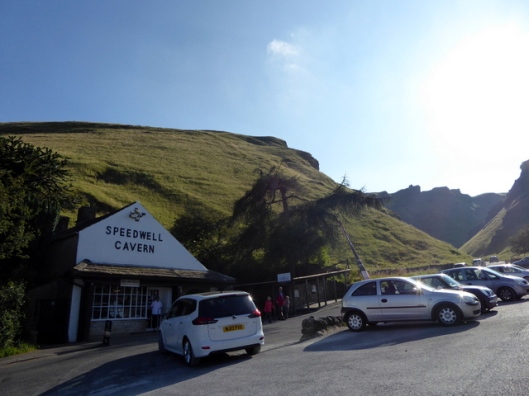
The entrance to Speedwell Cavern
Thanks for visiting!


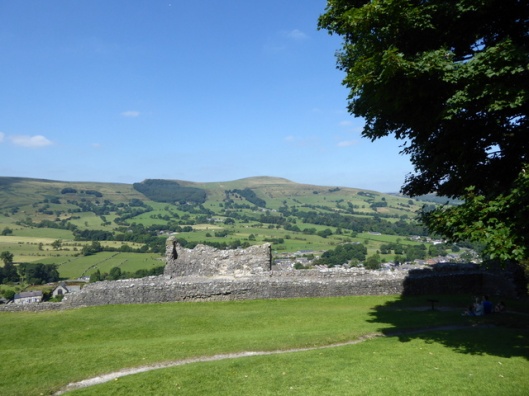
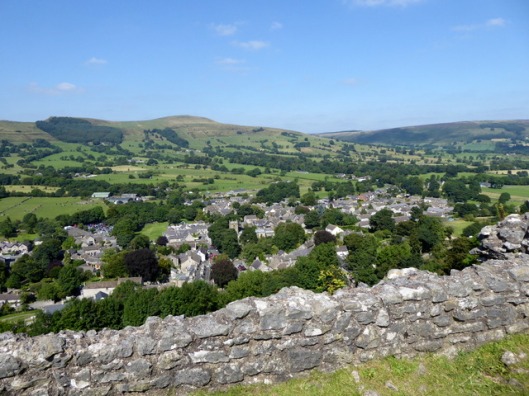
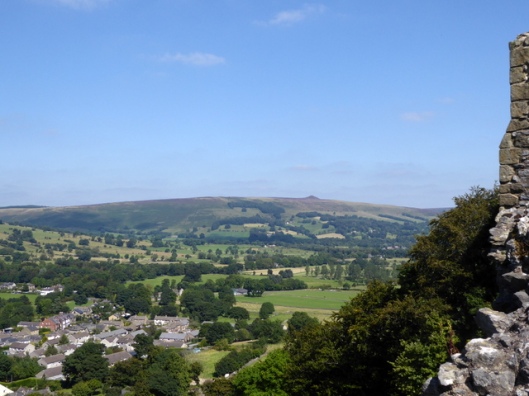
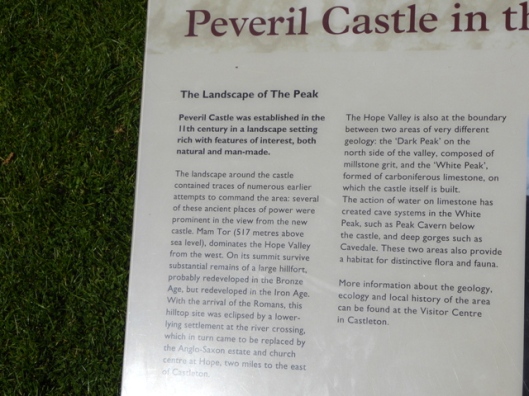
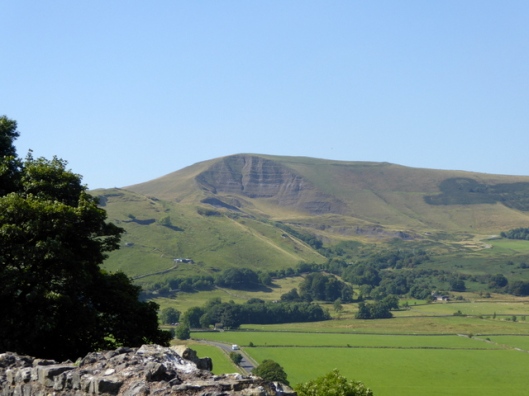


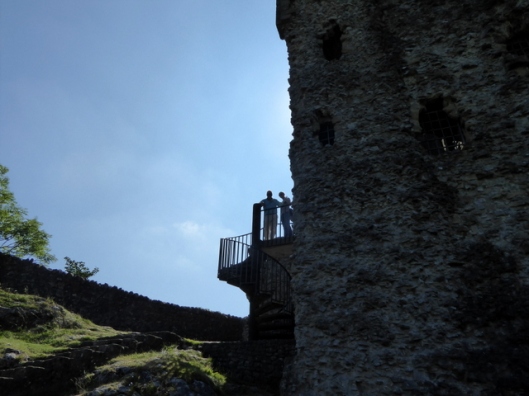
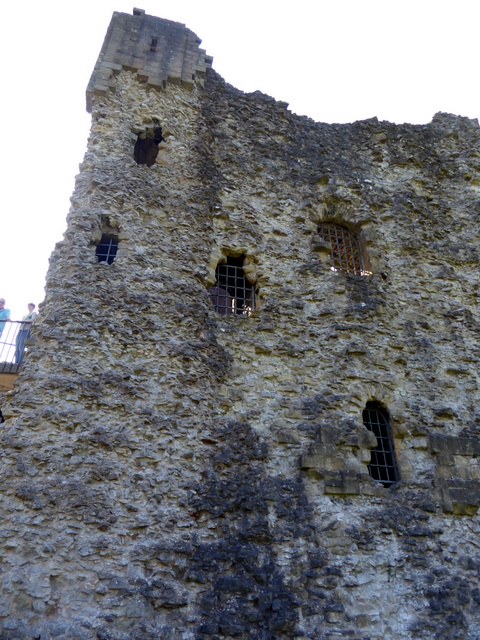

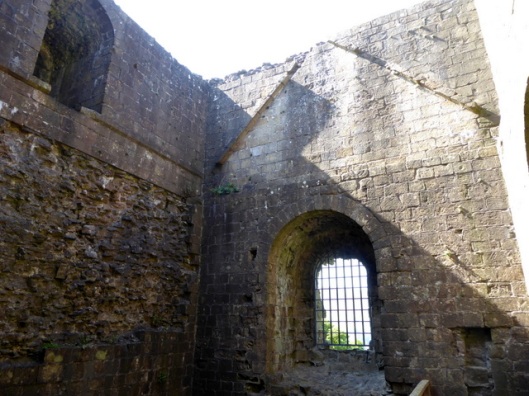
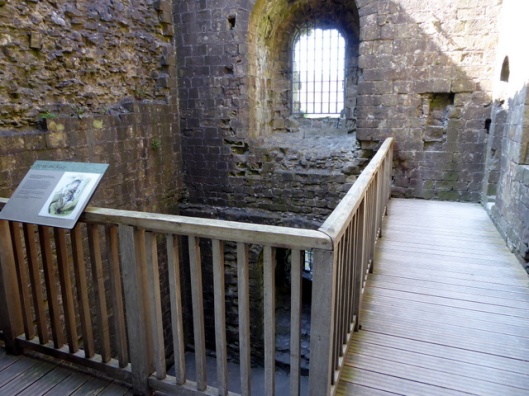
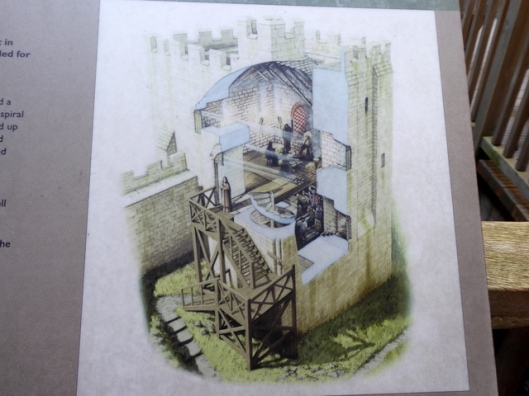




Loved the history and the splendid views.
LikeLiked by 1 person
Thank-you Susan. The views are worth the long climb up the hill.
LikeLike
A lovely adventure fir you all…and gorgeous weather too😊
LikeLiked by 1 person
Thank-you! It was a lovely day. I had forgotten how good it was and felt very wistful as I sorted through my photos. The weather isn’t so good now – 10 C and lots of heavy rain showers 😦
LikeLiked by 1 person
Gosh, it sure was a picture perfect day. Thanks for sharing your gorgeous photos and the history, Clare! xo
LikeLiked by 1 person
Thank-you Jill! The weather was indeed perfect!
LikeLiked by 1 person
Spectacular scenery Clare, thanks for another great walk!
LikeLiked by 1 person
Thank-you Andrea.
LikeLiked by 1 person
I can’t imagine being in something that old. For a history nut like me it would be hard to ever leave. You had beautiful weather too.
I love the model and wish they’d do that for all the ruined castles and abbeys. Many times it’s hard to visualize what they might have looked like.
It must be nice to see spleenworts wherever you go!
LikeLiked by 1 person
Thank-you Allen. I find the models really useful. Last year we visited Castlerigg Stone Circle, another English Heritage site in the Lake District and they had a model there too. I seem to be finding spleenworts everywhere this year Allen!
LikeLike
I think I remember your post with that model too.
You’re very lucky to see so many spleenworts. I’d settle for just one!
LikeLiked by 1 person
I hope you find one soon.
LikeLiked by 1 person
What a great spot to visit on a lovely day.
LikeLiked by 1 person
The views from the castle are glorious.
LikeLike
The countryside is beautiful, and so much history! Thank you for taking us along, Clare.
LikeLiked by 1 person
It is my pleasure! Thank-you Lavinia.
LikeLike
I’m quite a fan of Peveril Castle and its situation. Thanks for the visit!
LikeLiked by 1 person
My pleasure Margaret. Thank-you!
LikeLiked by 1 person
Wonderful to learn more of the history there! Great photos too 🙂
LikeLiked by 1 person
Thank-you very much Christy 🙂
LikeLike
Oddly enough, Peveril, Castleton and Blue John came up in conversation the other day – and there you are (or were)! It’s years since I visited the area and I can’t actually remember if I made it as far as the castle! Excellent shots – you had a lovely day for it too.
LikeLiked by 1 person
Thank-you Mike! The weather was perfect and we hadn’t visited Castleton for about 13 years.
LikeLike
I imagine your exertions gave you a good night’s sleep! Lovely views. Such an old, old place; no wonder they thought it uncomfortable to live in.
LikeLiked by 1 person
Yes, the views are lovely from there and I was pleasantly tired after our day out. Thank-you Lisa!
LikeLike
I love touring places like these, Clare, and used to take every chance I got. Glad you and the family were able to tour and share with us the sights. I never knew exactly what the Keep was – thanks for explaining. And for showing us the model of what the castle was supposed to look like.
And I knew you’d sneak in a couple photos of wild flowers!!! Well done, you!
LikeLiked by 1 person
Thank-you Cynthia. We liked the model too and I just can’t resist flowers!
LikeLiked by 1 person
I love exploring castles! This one was a beauty, what stunning views too. Really enjoyed the wildflower photos too 🙂 xx
LikeLiked by 1 person
Thank-you so much Becky! 🙂 xx
LikeLiked by 1 person
Good posts, beautiful blog.
Congratulations.
Welcome to see my creations:
http://paintdigi.wordpress.com
LikeLike
Thank-you very much!
LikeLiked by 1 person
Looks like you had some good weather for it. Every time we pass by we say “We must stop and look round one day” – that’s what happens when you live close to somewhere. 😉
LikeLiked by 1 person
I know! There are quite a few places round here we have been meaning to visit for years.
LikeLiked by 1 person
Hi Clare,
The countryside is lovely and it looked like a perfect day for walking. I’m glad you had such a lovely family time exploring. Old castles fascinate me. We don’t really have anything like that here of course, so if I am ever able to visit Europe, I hope to check out at least one castle. Thank you for the lovely shots and also the interesting historical details which were new to me. Best wishes. x
LikeLiked by 1 person
Thank-you Jane! We love castles and visit them as often as we can. My girls loved them when they were little especially if there were little passages to hide in or medieval toilets to look down! Take care and best wishes xx
LikeLiked by 1 person
I love the whole area, the tors and so forth, I remember a great bookshop in Castleton although they did try to charge double the normal retail price for a second hand Wordsworth edition of Dracula. The time it must have taken to build castles still impresses me.
LikeLiked by 1 person
Brand new Wordsworth editions are only about £1.50 aren’t they? Most people know they’re cheap and I wouldn’t buy a second-hand one for much more than 50p. I didn’t see the bookshop! Probably missed it through talking too much 😉
LikeLiked by 1 person
At the time they were £1.00 and the book was in decent nick but with a £2.00 price tag, needless to say I chose something else instead. I hope the bookshop is still there, perhaps an investigation of my own is in order at some point.
LikeLiked by 1 person
If it’s still there I’ll visit next time we’re in the area.
LikeLiked by 1 person
Castleton is absolutely beautiful and picturesque.The photographs are mind- blowing and the retelling well penned and very evocative.. Thanks for sharing your outing with us, dear Calre ❤ Love & best wishes. Aquileana 😀
LikeLiked by 1 person
Thank-you my dear Aquileana. I hope you are having a happy springtime xx 🙂
LikeLiked by 1 person
I love visiting castles! This one reminds me of Rochester which I visited last year, only a keep left there too and a bit empty inside. Lovely photos as usual :).
LikeLiked by 1 person
Thank-you Cat! I grew up in Bromley (which was still in Kent in those days) but never went to Rochester Castle or the Cathedral! A missed opportunity! 😉
LikeLiked by 1 person
Bromley has an identity crisis, it’s a London borough but with a Kent postcode address lol :). I grew up in Bromley too! How weird is that? 🙂
I’ve been to the Cathedral too, a lot of history there but the whole underground part is being refurbished so never got to visit the crypt 😦 !
LikeLiked by 1 person
Weird! Bromley was a proper county town when I was young with loads of great independent shops down the high street. It’s so different now 😦 Pity you couldn’t visit the crypt.
LikeLiked by 1 person
I know very different. But I’m now living in a town that has hardly any shops at all, the high street is nearly dead Looking forward to moving soon. The crypt is a shame, it’s where all the best history lies, but I’d still recommend the above ground cathedral for a visit if you’re ever in the area, such an atmosphere in those places, always :).
Looking forward to moving soon. The crypt is a shame, it’s where all the best history lies, but I’d still recommend the above ground cathedral for a visit if you’re ever in the area, such an atmosphere in those places, always :).
LikeLike
My daughter has been watching an old BBC history series, https://www.youtube.com/watch?v=oLy1LskT6Y8 and has been relating the stories to me over the phone. I have been hearing a lot about William the Conqueror, so your post is very much on topic. Great you were able to share such a lovely walk with Alice and Elinor.
LikeLiked by 1 person
Thank-you for the link Ann. I had completely forgotten this series! It was lovely being together again even for just a few hours; I do miss having my elder daughter close at hand as I’m sure you understand.
LikeLiked by 1 person
Indeed, I understand. Skype helps but it’s not the same as being in the same room. 🙂
LikeLiked by 1 person
🙂
LikeLiked by 1 person
This was fascinating Clare! Not only is the landscape around this castle just breathtaking but the castle itself is fascinating. I love the scale of these ancient buildings and can only imagine how imposing they must have looked looming out of the surrounding land – which I guess was the point! You had spectacular weather too it looks. So glad you had such a special visit here with your family.
LikeLiked by 1 person
Thank-you Kate. The weather was wonderful that day; we were most fortunate. The castle must have dominated the skyline when it was first built and the people in the village below must have felt as though they were being watched all the time.
LikeLiked by 1 person
Pingback: GOOD LUCK
Parts of me arise from here. It is so beautiful and significant.
LikeLiked by 1 person
It is a fabulous place to visit, Cindy – one of our favourites. Thank you for commenting ❤
LikeLike